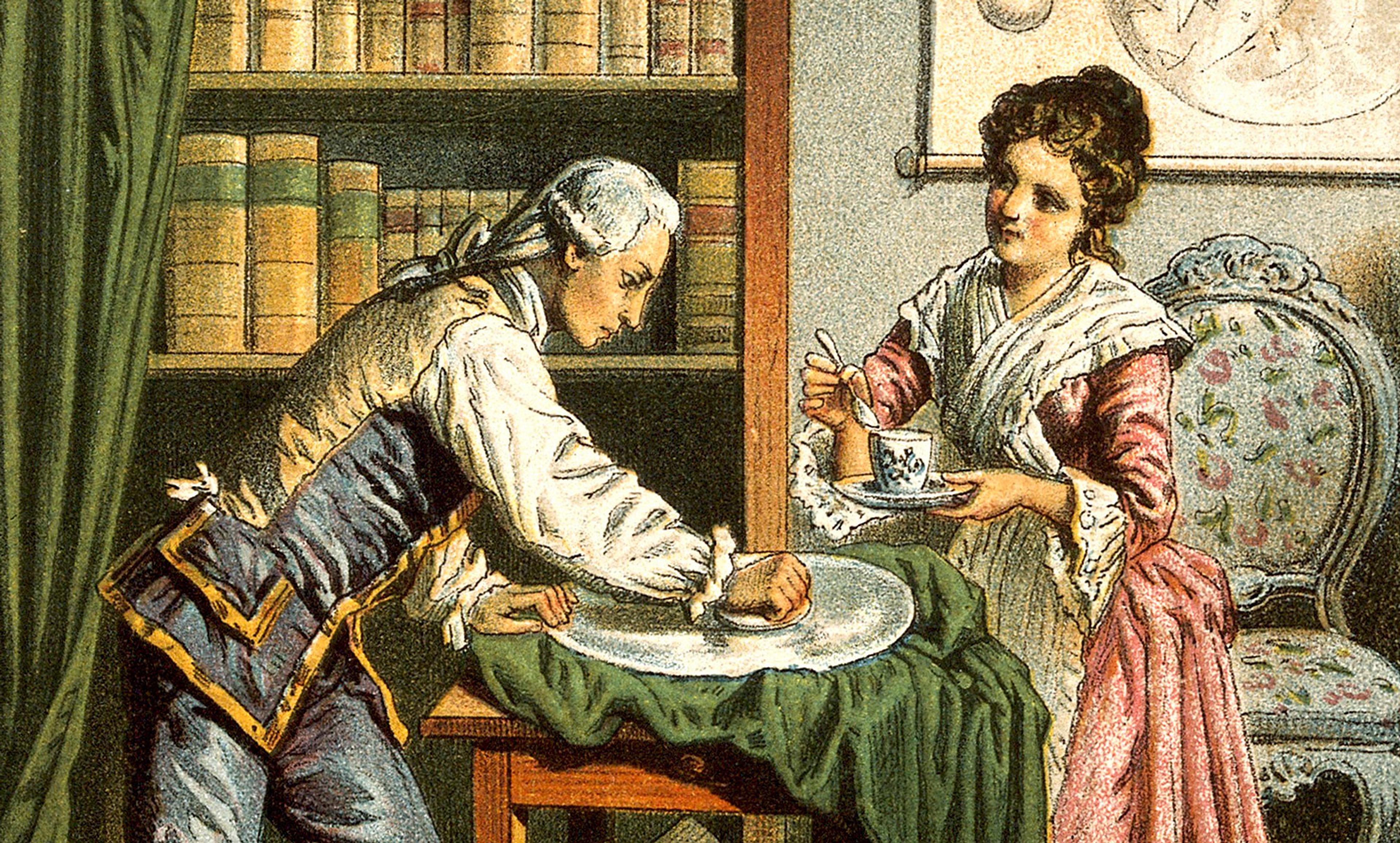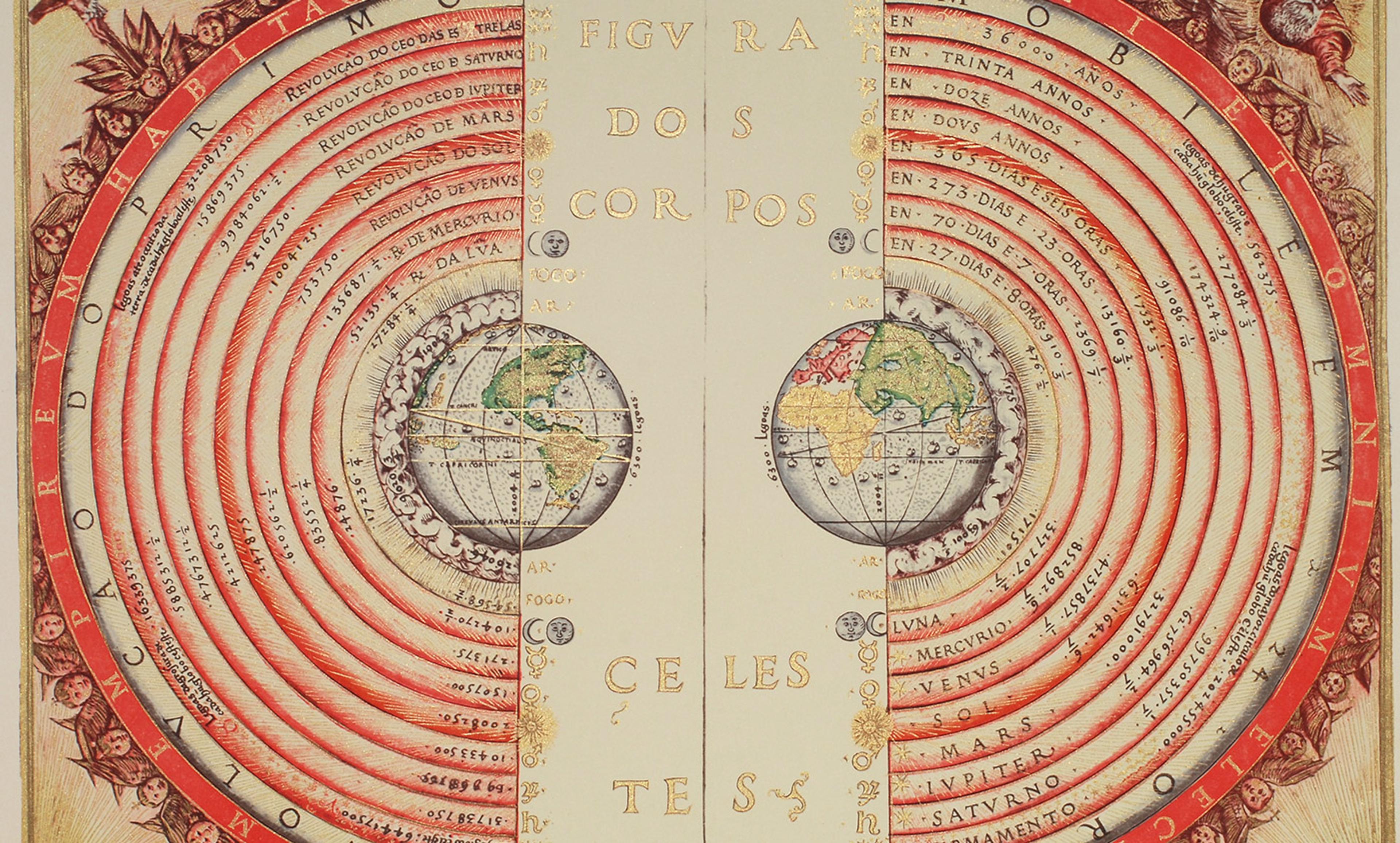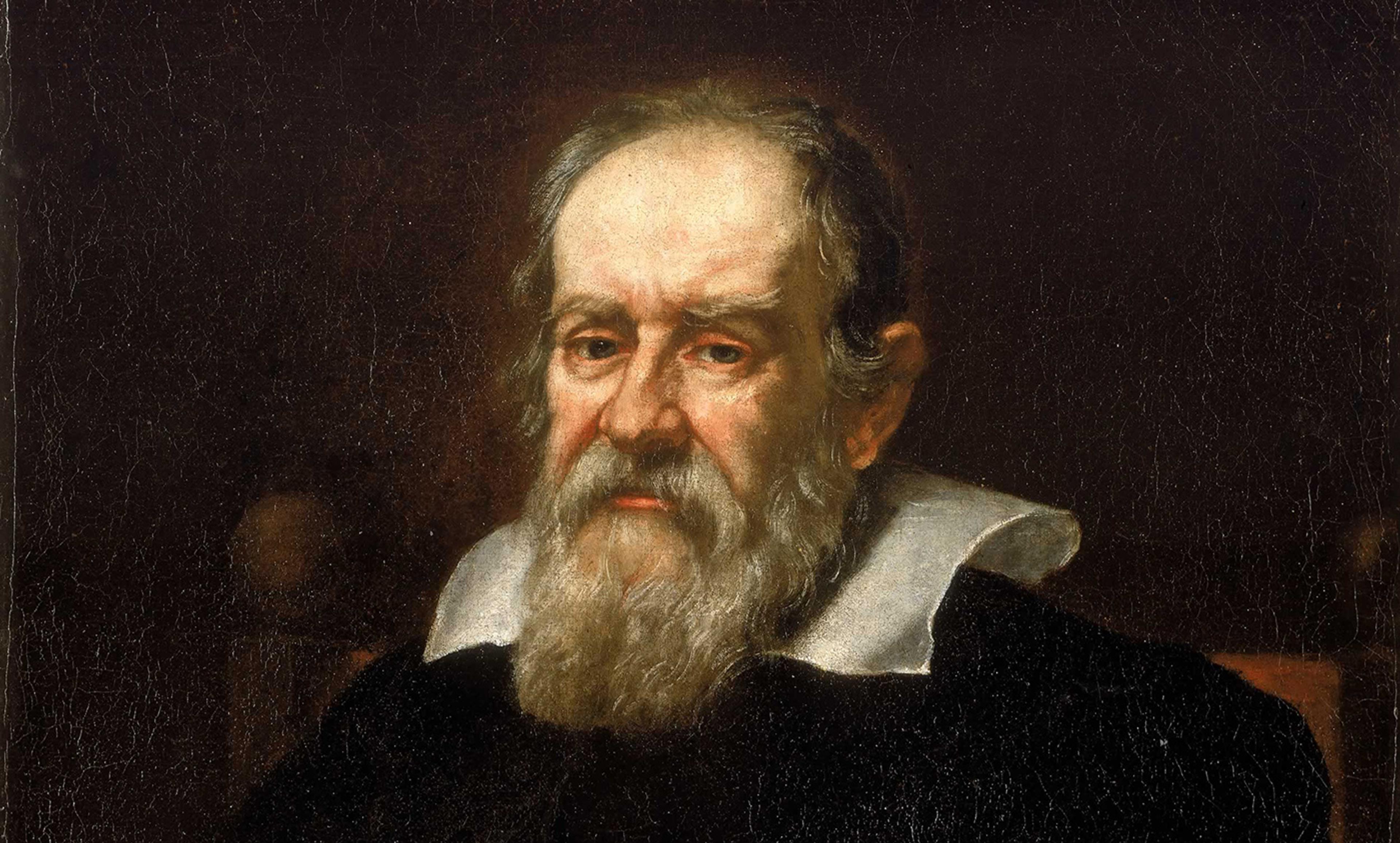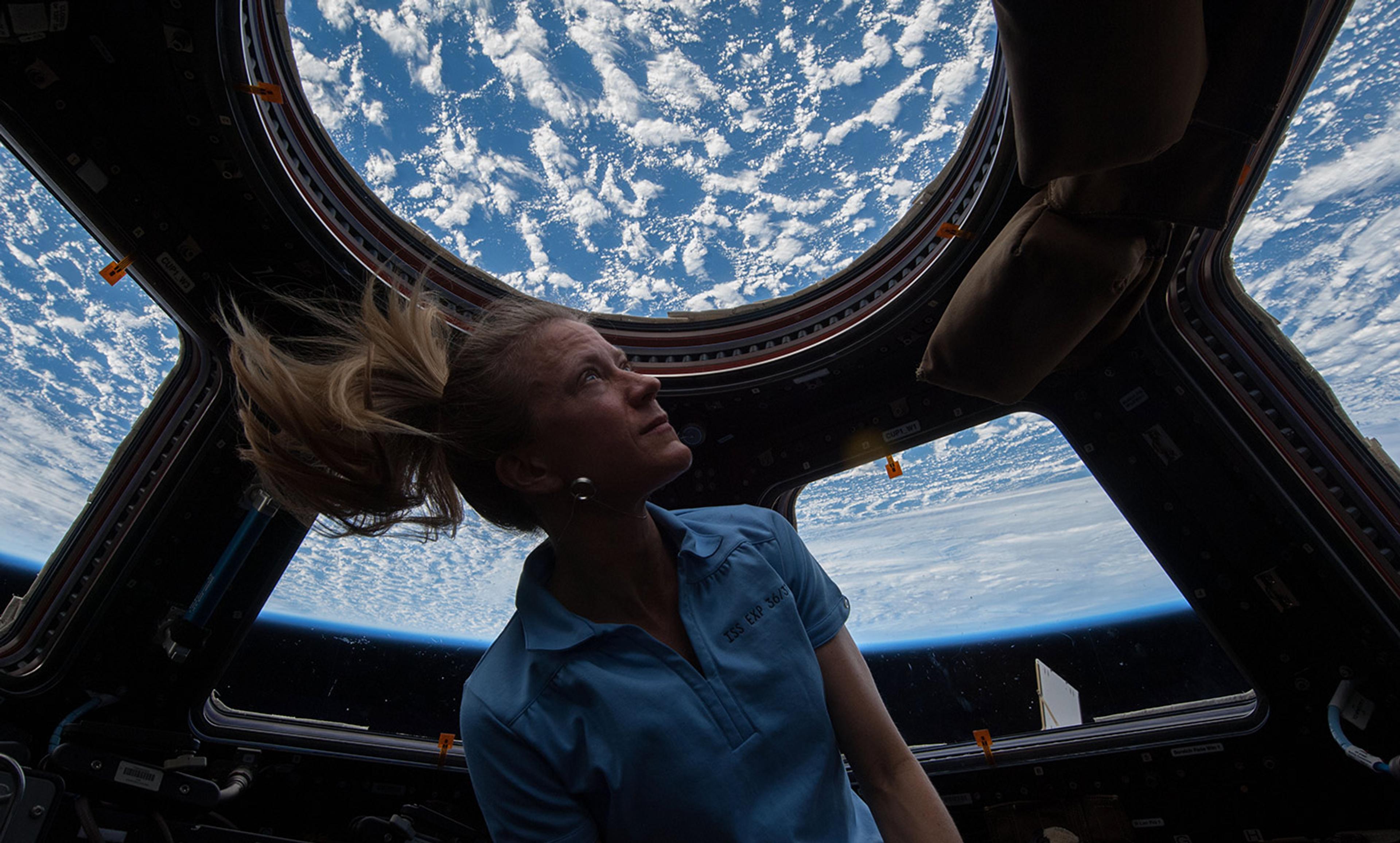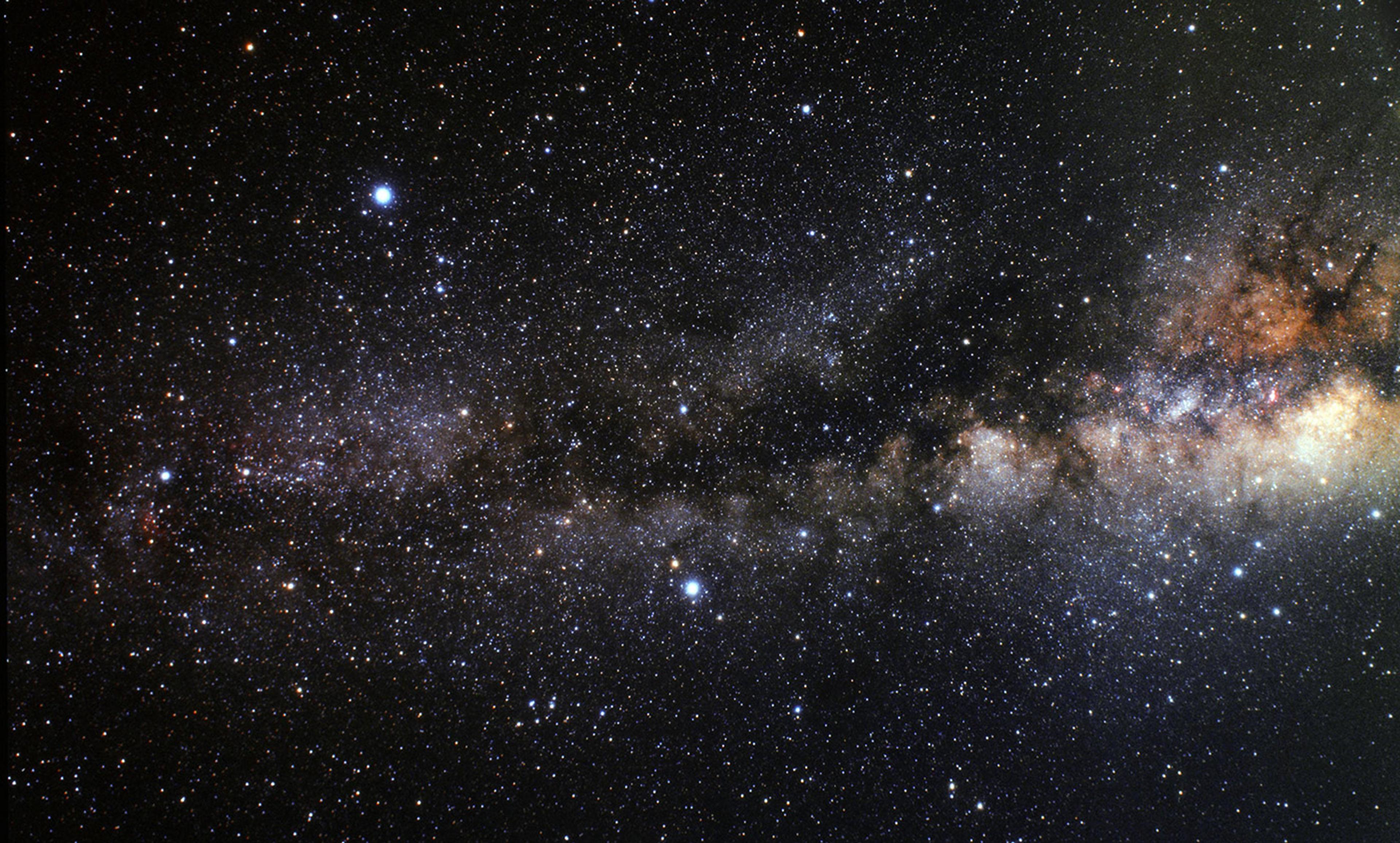Unequal partners; William and Caroline Herschel. Wellcome images/Wikipedia
In her 1968 poem, Planetarium, the poet Adrienne Rich wrestles with the crisis of female identity through the lens of astronomy. Rich wrote the poem after learning about the case of Caroline Herschel, an astronomer born in Germany in 1750 who discovered eight comets and three nebulae, and drew praise from the King of Prussia and London’s Royal Astronomical Society. Yet Caroline remained obscure compared with her brother, William, who discovered the planet Uranus.
In the opening lines of the poem, Rich casts Caroline as a ‘woman in the shape of a monster’ and ‘a monster in the shape of a woman’. The skies, Rich says, are full of such women – figures drawn from classical mythology, who are ‘doing penance for impetuousness’, and who have lent the stars their names. Rich imagines Caroline ‘riding the polished lenses’ of her telescope into the night sky, through which she sees these wives, daughters, temptresses, all rendered monstrous, like her, for violating the expectations of their sex.
To this day, astronomy remains one of the only scientific fields that relies so heavily on ancient Greek and Roman mythology for its naming conventions. Cosmology and mythology have been interwoven throughout human history, so it’s not surprising that modern-day astronomers have inherited this tradition. But classical mythology is deeply misogynistic, and using it to identify celestial bodies contributes to a scientific culture that diminishes the achievements of women like Caroline. Male deities and figures reign with nearly unlimited power, while their female counterparts suffer violence and humiliation.
Among the myths we have used to name and claim the heavens is Cassiopeia, a constellation in the northern hemisphere. It is named for a mythical queen of Aethiopia, whom Poseidon punished for her vanity by lashing her to her throne. Cassiopeia’s daughter, Andromeda, was also made to suffer for her mother’s sins by being chained naked to a rock, where she waited for the sea monster Cetus to rape her. In the myth, Perseus saved Andromeda and took her as his wife, but as a constellation, she still waits chained to her rock.
The Pleiades, also known as the Seven Sisters, is a cluster of stars in the Taurus constellation. The Seven Sisters were once women who danced together under the night sky, but Orion desired them, so he hunted them for seven years. To help the sisters escape, Zeus turned them all into stars – but Orion, another constellation, still chases them night after night.
Male astronomers, when they look at the sky, can find more uplifting role models. The constellations named after men tell stories of heroism and conquest, not submission and subjugation. Even today, NASA continues to recycle the names of mythological figures and great men of history when naming spacecraft and missions. Orion, a crewed spacecraft meant to facilitate travel to Mars, is named for the same Orion that hunted the Seven Sisters. Kepler, Galileo, Copernicus, and Cassini – names pulled from the scientific establishment that excluded women like Caroline – are all unmanned spacecraft sent to explore the cosmos. Even spacecraft with seemingly gender neutral names are coded male: Voyager and Pioneer evoke the men who heroically left home and hearth on voyages of exploration.
There are exceptions. Sojourner, a Mars rover, was named after Sojourner Truth, the escaped slave who became a women’s rights activist and abolitionist. But it’s telling that this name was suggested by a 12-year-old girl in an essay contest, rather than originating in the scientific establishment. ARTEMIS, a spacecraft in orbit behind the Moon, is named for the Greek goddess of the hunt, virginity and childbirth. Yet this too has gendered implications, since Artemis is associated with purity and motherhood, two features of classical femininity. Juno, an unmanned spacecraft, is currently observing the planet Jupiter; in Roman mythology, she was Jupiter’s wife, and had the ability to see through the clouds of mist that he used to conceal his infidelities. Juno the spacecraft will attempt the same thing – and so even now, when we send a female-named spacecraft to investigate the cosmos, the mission invokes a domestic metaphor. (Alice Bowman, NASA’s Mission Operations Manager for the New Horizons’ mission to study the outer edges of the solar system, is commonly referred to as ‘MOM’.)
Just like the mythical women Caroline Herschel saw through her telescope, her identity was dependent on the powerful men in her field. Perhaps as a consequence, Caroline perceived herself as a mere helpmate of William, rather than a scientist in her own right. ‘I am nothing,’ she wrote. ‘I have done nothing at all; all I am, all I know, I owe to my brother. I am the tool which he has shaped to his use.’ In the cosmos, women are portrayed as either monsters or domestic nurturers; it is no surprise, then, that Caroline chose to self-identify as the latter.
Today, the skies are still filtered through this tradition of mythic misogyny. Naming conventions for spacecraft and constellations are a subtle but significant way that the discipline of astronomy perpetuates a male-dominated culture. Simply giving more celestial bodies female names is not the solution. Rather, change must begin with the recognition that astronomy’s self-image is built upon an age-old habit of telling stories about the abuse of women.
